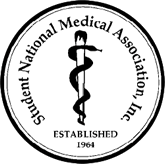
A psychologist is a professional who practices psychology and studies mental states, perceptual, cognitive, emotional, and social processes and behavior. Their work often involves the experimentation, observation, and interpretation of how individuals relate to each other and to their environments.

Dhaka Medical College and Hospital is a public medical college and hospital located in Dhaka, the capital city of Bangladesh. It houses medical school as well as a tertiary care hospital on one campus.

Leonard M. Miller School of Medicine (UMMSM) is the University of Miami's graduate medical school in Miami, Florida. Founded in 1952, it is the oldest medical school in the state of Florida.

The University of Minnesota Medical School is the medical school of the University of Minnesota. It is a combination of two campuses situated in Minneapolis and Duluth, Minnesota. The University of Minnesota Medical School is also part of one of the largest Academic Health Centers (AHC) in the United States. This center allows health professionals to train collaboratively across interdisciplinary teams throughout the course of their training programs. The AHC comprises the Medical School, School of Dentistry, School of Nursing, College of Pharmacy, School of Public Health, and the College of Veterinary Medicine.
The Jade Ribbon Campaign (JRC) also known as JoinJade, was launched by the Asian Liver Center (ALC) at Stanford University in May 2001 during Asian Pacific American Heritage Month to help spread awareness internationally about hepatitis B (HBV) and liver cancer in Asian and Pacific Islander (API) communities.
The Duke University School of Medicine, commonly known as Duke Med, is the medical school of Duke University. It is located in the Collegiate Gothic-style West Campus of Duke University in Durham, North Carolina. The School of Medicine, along with the Duke University School of Nursing, Duke University Hospital, Duke Regional Hospital, Duke Children's Hospital, Duke Raleigh Hospital, and other affiliated hospitals, clinics, and laboratories, make up the Duke University Health System. Established in 1925 by James B. Duke, the School of Medicine has earned its reputation as an integral part of one of the world's foremost patient care and biomedical research institutions.

Clarence Sumner Janifer Sr. was a physician and the first African American member of the Medical Society of New Jersey.

The University of Kentucky College of Medicine is a medical school based in Lexington, KY at the University of Kentucky's Chandler Medical Center.
North Carolina State University College of Veterinary Medicine is an American educational institution located in Raleigh, North Carolina that offers master's and doctorate-level degree programs; interdisciplinary research in a range of veterinary and comparative medicine topics through centers, institutes, programs and laboratories; and external engagement through public service programs and activities.

Leonidas Harris Berry was an American and pioneer in gastroscopy and endoscopy. He served as the president of the National Medical Association from 1965 to 1966.
Medical school in the United States is a graduate program with the purpose of educating physicians in the undifferentiated field of medicine. Such schools provide a major part of the medical education in the United States. Most medical schools in the US confer upon graduates a Doctor of Medicine (MD) degree, while some confer a Doctor of Osteopathic Medicine (DO) degree. Most schools follow a similar pattern of education, with two years of classroom and laboratory based education, followed by two years of clinical rotations in a teaching hospital where students see patients in a variety of specialties. After completion, graduates must complete a residency before becoming licensed to practice medicine.
The Center for International Blood and Marrow Transplant Research is a collaboration between the National Marrow Donor Program and the Medical College of Wisconsin's International Bone Marrow Transplant Registry and Autologous Blood and Marrow Transplant Registry.
Doctor of Osteopathic Medicine is a medical degree conferred by the 38 osteopathic medical schools in the United States. DO and Doctor of Medicine (MD) degrees are equivalent: a DO graduate may become licensed as a physician or surgeon and thus have full medical and surgical practicing rights in all 50 US states. As of 2021, there were 168,701 osteopathic physicians and medical students in DO programs across the United States. Osteopathic medicine emerged historically from osteopathy, but has become a distinct profession.

The Student National Medical Association (SNMA), established in 1964, is the oldest and largest independent, student-run organization focused on the needs and concerns of black medical students in the United States. It was established as a subdivision of the National Medical Association in 1964 by medical students from Howard University and Meharry Medical College. The organization is committed to supporting current and future underrepresented minority medical students, addressing the needs of underserved communities, and increasing the number of clinically excellent, culturally competent and socially conscious physicians.
The Asian Liver Center is a non-profit organization at Stanford University, United States, that researches the high incidence of hepatitis B and liver cancer in Asians and Asian Americans. The Asian Liver Center (ALC) was founded in 1996 to spearhead educational outreach and advocacy efforts in the areas of hepatitis B and liver cancer prevention and treatment, serves as a resource for both the general public and health practitioners, and implements clinical and research programs.
Alton Ivan Sutnick is an American medical researcher, educator and administrator. He is the author of over 200 scholarly publications.
Clara Arena Brawner was the only African-American woman physician in Memphis, Tennessee, in the mid-1950s.

Numa P. G. Adams was a dean at Howard University College of Medicine from 1929 until his death, in 1940. He was the first African American to hold the position of dean of the College of Medicine at Howard University.
William B. Lawson is an American professor, psychiatrist and a Distinguished Life Fellow of the American Psychiatric Association (DLFAPA).








